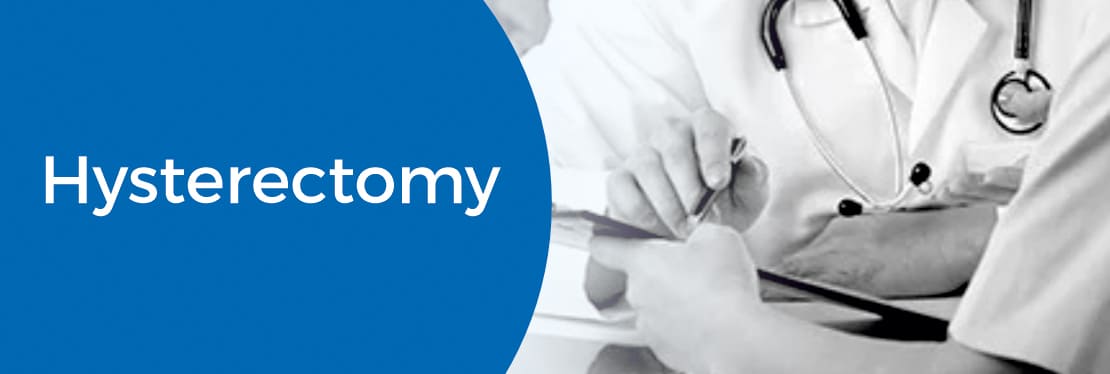What is Hysterectomy Treatment
Hysterectomy is a surgical procedure to remove the uterus, cervix, ovaries and fallopian tubes. A laparoscopic hysterectomy is a minimally invasive procedure that allows the surgeon to view the surrounding organs and get precise control over the incision. The surgery is performed using small surgical instruments, cameras and lights to aid the surgeon during the procedure. A laparoscopic hysterectomy procedure has many benefits as it involves less post-operative pain, less scarring, fewer complications and a short stay in the hospital post-surgery. This procedure involves small incisions compared to traditional hysterectomies.
Why is Hysterectomy done?
Laparoscopic hysterectomy removes the uterus and cervix through small incisions below the navel. Laparoscopy surgery is also known as keyhole surgery. This procedure is suggested when alternatives such as medications or minor surgeries are unable to reduce the symptoms of gynaecological problems. Laparoscopic hysterectomy is of different types:
- Total laparoscopic hysterectomy – a procedure where both the cervix and uterus are removed.
- Subtotal laparoscopic hysterectomy – a procedure where only the uterus is removed.
- Oophorectomy – a procedure which removes either one or both ovaries and fallopian tubes.
A laparoscopy hysterectomy can treat different conditions such as:
Endometriosis
It is a condition where the tissue that forms the inner lining of the uterus grows in other organs such as the fallopian tubes and ovaries. It affects the chances of conceiving. The effects of endometriosis vary – from severe symptoms to symptoms that go unnoticed. These symptoms include pain during urination, constipation and heavy periods. The doctor might recommend hormone medications to reduce the symptoms but if it still persists an abdominal surgery will remove the uterus to prevent the spread of the tissue in the pelvic region.
Pelvic organ prolapses
It is a condition where an organ in the pelvic region slips down and bulges into the vagina. The organs such as the uterus and bladder have chances of bulging into the vagina. The symptoms such as irregular urination and an uneasy feeling in the vagina can cause a lot of pain and discomfort. Depending upon the severity of the condition, the doctor might recommend either medication or surgery.
Fibroids
It is a non-cancerous growth of muscle or tissue that develops in or around the uterus. The symptoms include heavy periods, constipation, and abdominal pain. The doctor might recommend getting surgery to prevent the growth of the tissue.
Preparation for Hysterectomy Treatment
The surgeon will ask the patient to undergo certain tests to make sure that there are no medical conditions that may cause complications during the surgery. A pre-operative test is conducted by taking blood samples, urine samples and an electrocardiogram to check the heart. The patient is recommended to take or alter certain medications before the operation.
What is the process of Hysterectomy Surgery?
The estimated time of the operation depends upon factors such as the severity of the condition and the skill of the surgeon. Anaesthesia is administered via the arm or wrist (through the IV line). A monitor will be attached to the chest to read the vital signs before the anaesthesia is given. All hysterectomies are done under a general anaesthetic. A regional anaesthetic, which will block out the lower part of the body, is given if the patient has any breathing difficulties or heart disease. Leads are attached to the chest to monitor the pulse and blood pressure of the patient.
After the patient is anaesthetised, the surgery will begin by making a small incision below the navel and a thin tube is inserted into it. Carbon dioxide gas is passed through the tube to expand the abdomen which allows a better view of the organs. The laparoscope is inserted into the incision to view the organs on a monitor.
Additional incisions are made to insert other surgical instruments which lift the ovaries and fallopian tubes. The uterus or the cervix, depending on the type of hysterectomy are removed through the vagina. Once the surgery is complete, the incisions will be sealed using dissolvable stitches or sutures.
Results/ Post Procedure
The care unit will monitor the patient’s blood pressure, oxygen levels, and vital signs. A catheter tube will be attached to the bladder to drain the urine. The patient will feel a little discomfort due to the after-effects of anaesthesia which last only for the first 24 hours.
The recovery period in a laparoscopic hysterectomy is short and less painful. Complete recovery may take 1 – 2 weeks depending on the condition of the patient. The patient is advised not to stay in bed and after a period of recovery will be asked to walk and do pelvic floor muscle exercises. After the laparoscopic hysterectomy procedure, the patient will no longer have any periods or conceive..
What Are the Risks?
Laparoscopic hysterectomy is a safe procedure, but with any surgery comes it’s set of risks that could lead to further complications. Here are some risks involved with laparoscopic hysterectomy:
- There are chances that during the surgery an instrument could accidentally damage the bladder or other organs in the abdomen
- In some cases, it could lead to excessive bleeding post-surgery. A drain or tampon might be given to collect the blood and fluids but if it persists, the patient might be taken back to the operation theatre to stop the bleeding.
- There are chances of blood clots to form in the veins if there is no physical activity post-surgery, such as walking or pelvic exercises.
